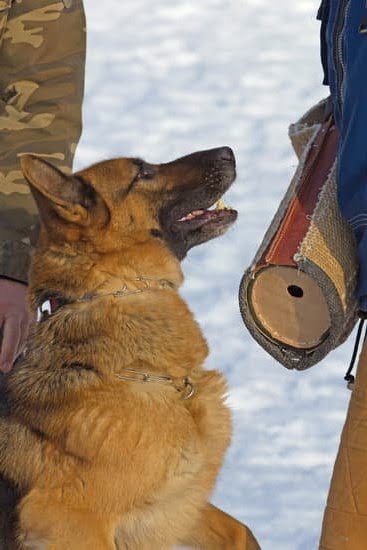Introduction
Ever wonder which breeds of dogs are the hardest to train? From incredibly active pooches to stubborn-natured fur babies, some dog breeds can be especially challenging to teach good manners and obedience. But no matter how challenging a pup might be, training shouldn’t take away from the bond between pup and pet parent. With patience, consistency, dedication, and plenty of love, you can help your furry friend learn proper behavior and become their happiest self.
From Chihuahuas to Bullmastiffs, there are certain types of dogs that can be particularly difficult to train. These pups often require consistent instruction and guidance in order for them to learn the desired behaviors. They may also have strong wills or independence issues that add an extra layer of complexity in training scenarios. Timid dogs may require more time for socialization as well as unique methods for teaching commands due to their natural wariness around new people and environments. Regardless of a dog’s personality type, all pups can benefit from establishing healthy routines with clear boundaries so that they know what their job is and what a trainer expects from them. With the right techniques and rewards system appropriate for each individual pup’s needs, even the most challenging breeds have the potential to learn quickly and form strong relationships with their owners.
The Bulldog
The Bulldog is an iconic and highly popular breed of dog due to its endearing loyalty and confident bearing. However, they can be notoriously difficult to train. Bulldogs tend to be very headstrong and obstinate; when they don’t want to do something, it’s often difficult to get them to change their minds. Additionally, Bulldogs are prone to getting bored with repetition easily, so any training needs to have variety in order for your Bulldog to successfully stay engaged. Signs that a Bulldog may be getting bored or uninterested in the task at hand include becoming lethargic, losing interest quickly, turning away from commands, or refusing food rewards. It is important for owners of this breed of dog to ensure that training sessions remain fun and engaging in order for the task at hand to be successful. Additionally, it is important for owners of Bulldogs to remain patient during the process as these dogs are not always quick learners.
The Chihuahua
The Chihuahua is an incredibly mischievous yet highly intelligent breed of dog that can pose a challenge when it comes to training. However, with the right approach and techniques, it does not have to be overly difficult. It is important to remember that Chihuahuas are small dogs but with big personalities, requiring patience and consistency from their owners at all times.
To properly train a Chihuahua, it helps to keep their energy channeled in positive and productive ways through activities like daily walks and playtime. Creative methods such as agility-style courses and other tricks teach them how to control their energy while also providing mental stimulation which is beneficial for this type of dog’s temperament. Additionally, rewarding positive behavior with treats can help when introducing new commands as well as reinforcing desired behaviors such as potty training or basic obedience tasks – both of which are heavily recommended for successful Chihuahuas owners!
The Golden Retriever
The Golden Retriever is a notoriously friendly and lovable breed that can easily become distracted when trying to train them. While their eagerness to please can make the training process go smoother than some breeds, they are still easily drawn away by anything that captures their attention. To put the focus back on training, it is important to be firm yet gentle when giving commands and use positive reinforcement as much as possible. Rewarding your Golden Retriever with treats or praise for good behavior will keep them motivated outside of learning commands, making them more willing to pay attention during lessons. It’s also important to have consistent rules in place so they understand what type of behavior is expected from them; this helps reduce confused or conflicting responses from them during training. Lastly, providing plenty of mental stimulation in between teaching periods can help keep their mind engaged and increase understanding of tasks.
The Great Dane
The Great Dane is a large, loving, and affectionate dog breed. However, they can also be difficult to train. The main challenges to training a Great Dane are their shortened attention span and tendency towards destructive behaviors such as chewing, digging, barking excessively and jumping up on people.
To successfully train a Great Dane it is important to provide them with structure and consistent guidance throughout the course of training. Establishing clear boundaries, rewards for good behavior, and consistency with commands will help keep your dog on track. A set daily routine is also essential in order to keep the dog balanced emotionally. Taking out your Great Dane on regular walks or providing vigorous exercise in the form of activities such as fetch will help ensure proper physical stimulation to burn off excess energy that could lead to undesirable behaviors like chewing.
Lastly, positive reinforcement with rewards and verbal praise should be used whenever possible when attempting to train your Great Dane. This technique helps your dog develop a strong bond with you as well as understand what is expected from them when given commands. As long as you are patient and consistent with their training regime, success can be achieved in teaching even the most stubborn of pups!
The Poodle
The Poodle makes for an intelligent and loyal companion, but they can sometimes be difficult to train because of their sensitive nature. To achieve a successful training session with your Poodle it’s important to stay calm and relaxed. Here are a few tips:
• Don’t rush the process – Allow your pup ample time to learn commands and don’t get frustrated if they take extra tries to do so.
• Use positive reinforcement – When your pup does something you’ve taught them, give them plenty of verbal praise and rewards such as treats. This will make your pup feel good about doing the right thing, instead of feeling “punished” if they make a mistake.
• Understand their limits – Poodles need plenty of mental stimulation, so ensure that their exercise and training routines are varied or they may become quickly bored. Also watch out for anxiety or nervousness- if your pup is starting to stress out too much it’s okay to take a break and redirect them onto something else.
The Boxer
The Boxer is an active and lively breed that requires consistent leadership and training to thrive. Boxers are easily excitable and can be prone to disobedience if left unsupervised or trained improperly. It is important for a Boxer owner to maintain a firm hand and consistent reinforced rules to assert dominance over their canine companion. To ensure the success of their individual dog, owners should enroll them in obedience classes from a young age, as well as provide plenty of socialization opportunities with other pet animals and people. Positive reinforcement techniques such as reward-based motivation, praise and treats can help encourage their natural intelligence while reinforcing desired behaviors at the same time. Additional tips include: set clear boundaries and limits with your pet; practice patience throughout training exercises; use repetitive commands until dogs have learned them by heart; teach one command at a time taking baby steps; don’t forget about regular playtime for mental stimulation –all of which will help develop a healthy relationship between you and your pooch.
The Cocker Spaniel
Cocker Spaniels are intelligent, sweet-natured dogs that enjoy the company of their owners. Unfortunately, though they’re eager to please, they can easily become frustrated during training. To prevent this frustration and ensure successful training, owners should employ a few strategies when working with their Cocker Spaniel.
First, since Cocker Spaniels thrive on companionship and attention, make sure to provide plenty of praise throughout the learning process – both verbally and with rewards like treats or toys! Trainers should also be patient and gentle when introducing commands. Long sessions may overwhelm a Cocker Spaniel; instead, instructors should opt for shorter lessons more frequently throughout the day and increase difficulty as the pet progresses.
Additionally, it’s important to create a calming environment for your dog. Loud noises or too many people in the room can distract them from learning, so try to keep interactions positive and stress free. Finally, consider getting professional help if your pup is having trouble progressing in training; animal behaviourists can help get to the root of any issues and create an effective plan for success!
The German Shepherd
The German Shepherd is a beautiful and intelligent breed of dog, but it can be difficult to train due to its high energy levels. To be able to effectively train a German Shepherd, owners must be dedicated, patient, and consistent in their command patterns. Establishing clear boundaries, such as verbal and physical cues (through commands like sit, stay or shake) that the dog will better recognize and respond to is essential. Consistent repetition of these commands throughout all stages of the training process helps yield more positive results. Crafty reward systems might also motivate the canine companion to comply with commands quicker, while offering periodic breaks between each session ensures they don’t become overwhelmed. When properly trained through patience and dedication, however, the German Shepherd can prove a valuable asset by exhibiting traits such as loyalty and obedience.
The Doberman
The Doberman breed is known for its intelligence and loyalty. They are also known as a brave breed, ready to protect their families. However, due to their energetic nature and size, Dobermans can be difficult dogs to train. They learn quickly, but easily become startled by new situations or sounds that cause fear reactions. It is therefore important to take your time with training any Doberman so that they can eventually grow comfortable with potentially scary circumstances. Positive reinforcement should always be used when training Dobermans, along with watching for warning signs of fear reactions such as lip licking or excessive barking. As a highly loyal breed that loves learning new things, when trained correctly the Doberman can make an excellent lifelong companion.
Conclusion
Training a difficult dog can be daunting; however, with patience and determination, even the most challenging pets can learn basic skills. Working with a positive reinforcement approach is often the most effective way to train dogs, as it enhances their desire to please and reduces aggression. As you embark on your path to teach your difficult dog new behaviors, keep in mind that hard work will pay off. Setting up consistent routines for meals, potty breaks, and exercise can provide an easy starting point. Additionally, don’t forget that dogs are social animals – offering lots of rewards and praise during training sessions will help build a trusting bond between you both. Finally, patience is key – have realistic expectations regarding success; remembering that everyone works differently. With focus and commitment on both your parts, even the most difficult dog can eventually learn how to behave properly in different situations!

Welcome to the blog! I am a professional dog trainer and have been working with dogs for many years. In this blog, I will be discussing various topics related to dog training, including tips, tricks, and advice. I hope you find this information helpful and informative. Thanks for reading!





